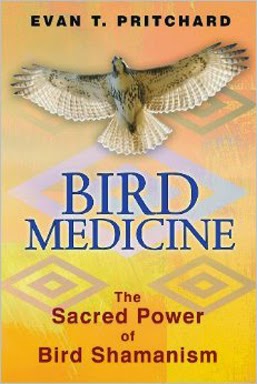Evan T. Pritchard, author of Bird Medicine: The Sacred Power of Bird
Shamanism, is a descendant of the Mi'kmaq people (part of the Algonquin
nation) and the founder of The Center for Algonquin Culture. Named
Abachbahamedtch (or chipmunk) by Mi'kmaq people, he is an assistant to several Algonquin
elders. Since 1990, his work helping Algonquin elders and bringing their
message to the media has helped thousands of people gain a better understanding
of this great civilization and its teachings.
According to Pritchard, traditional
Native Americans have viewed birds as spiritual teachers for at least 10,000
years. Pritchard's scholarly and illuminating book is based on his field
interviews with people in the Native community on birds as teachers, guardians,
role models, counselors, healers, clowns, peacemakers, and meteorologists. They
carry messages and warnings from loved ones and the spirit world, report deaths
and injuries, and channel divine intelligence to answer our questions. Some of
their "signs" are so subtle that one could discount them as
subjective, but others are dramatic enough to strain even a skeptic's
definition of coincidence.
Pritchard begins with an
exploration of the legends, wisdom, and powers of the birds known as the
gatekeepers of the four directions -- Eagle in the North, Hawk in the East,
Crow in the South, and Owl in the West. He reveals how the eagle can be a
direct messenger of the Creator, why crows gather in "Crow Councils,"
and how shamans have the ability to travel inside of birds, even after death.
Expanding his study to the wisdom and gifts of birds beyond the four gatekeepers,
such as hummingbirds, seagulls, and the mythical thunderbird, he provides
numerous examples of everyday bird sign interpretations that can be applied in
your own encounters with birds as well as ways we can help protect birds and
encourage them to communicate with us.
Bird Medicine: The SacredPower of Bird Shamanism by Evan T. Pritchard is a treasure trove of ornithological
insight and indigenous wisdom. Filled
with stories -- some fables involving only birds and some anecdotal narratives
of birds interaction with humans -- the book is also an impassioned plea for
humans to become more responsible about protecting bird habitats and breeding
grounds.

